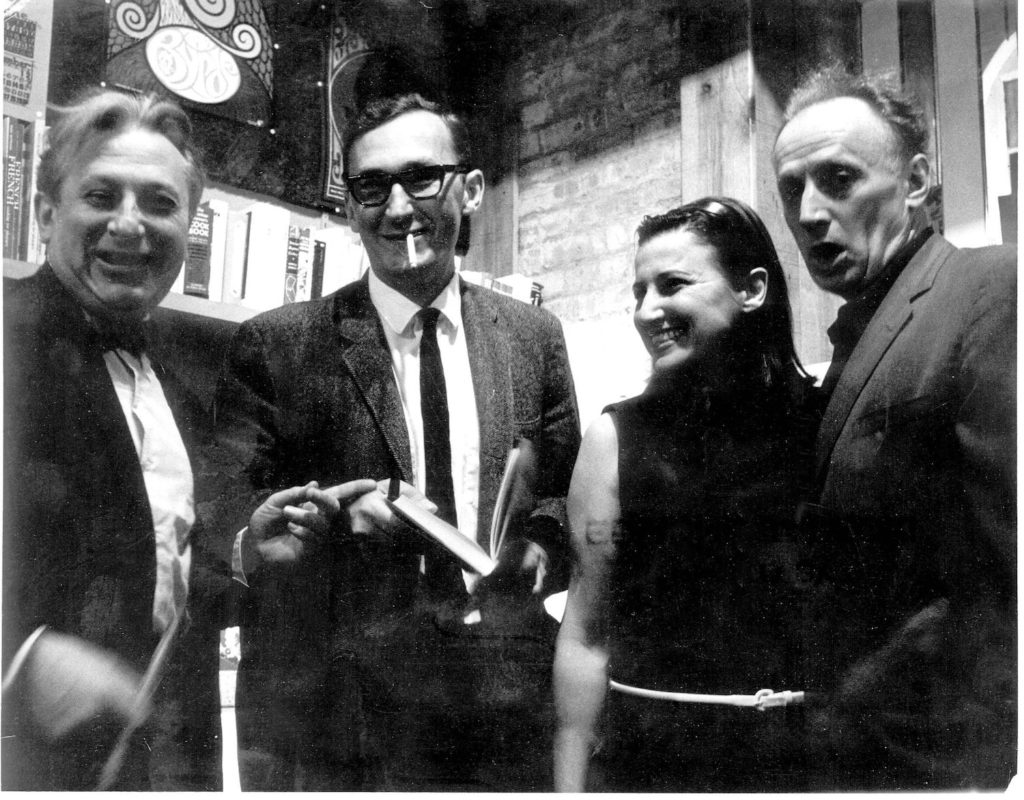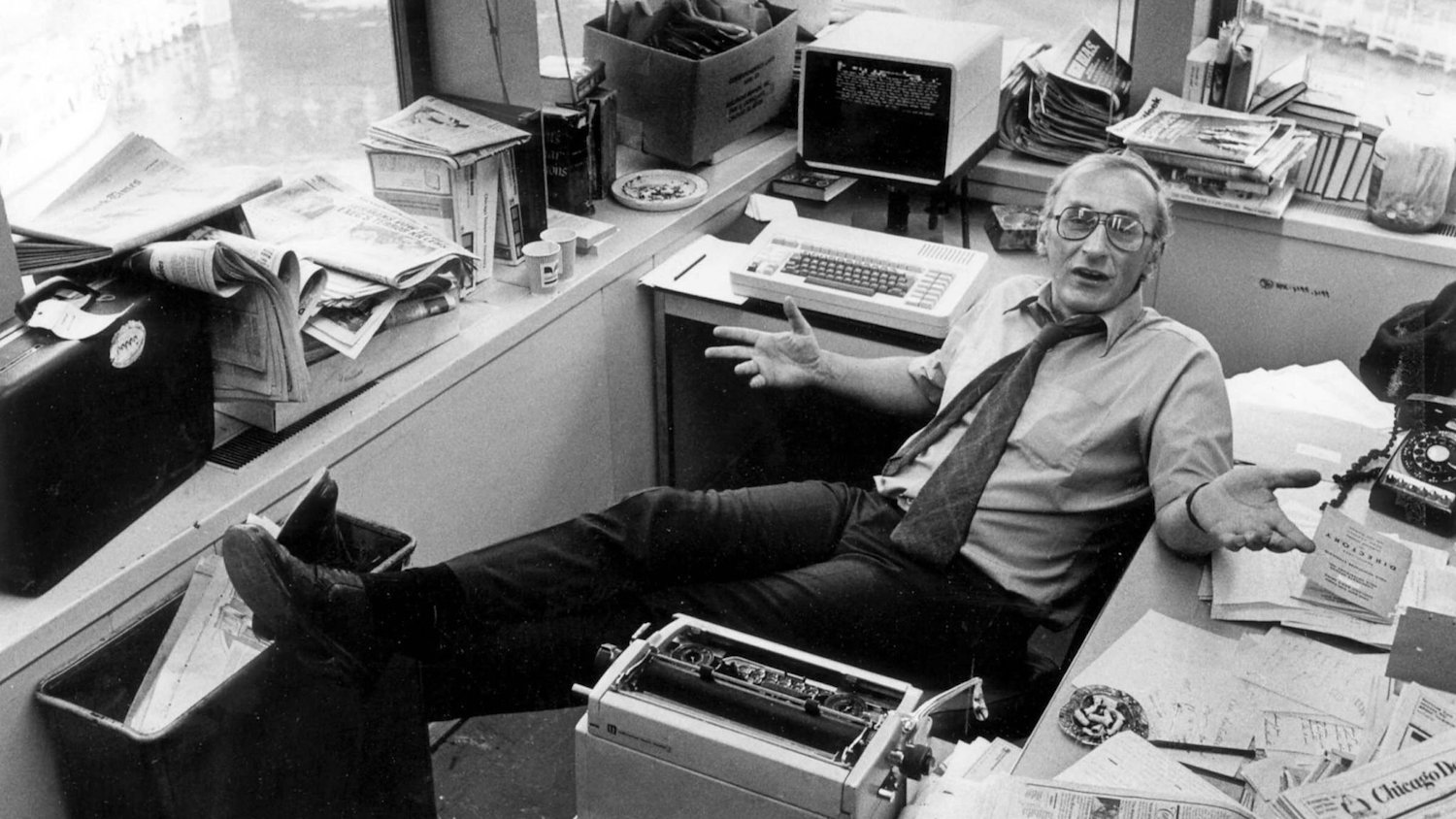It is an unfortunate truth of this trade that no one remembers the journalist. Ernie Pyle, the World War II correspondent who was killed on Ie Shima, was a household name in the 1940s and ’50s. Today, the Chicago Public Library has 10 copies of his books. Only one is checked out. Great literature is timeless, like the Beatles. Even great journalism is dated, like the Turtles.
But what about Mike Royko, who died 25 years ago this week? He won a Pulitzer Prize. His Richard J. Daley biography, Boss, sold more than a million copies. He was syndicated in 600 papers. Here’s what happened when a veteran journalist mentioned Royko to a journalism student.
“Sorry,” said the student. “What was the name of that reporter again?”
“Mike Royko,” I said.
“Can you spell it?”
“R-O-Y-K-O.”
“Never heard of him.”
While Royko is revered by Chicago journalists of a certain age, and while his framed columns still adorn the walls of his beloved Billy Goat Tavern, most of his work has gone the way of all newsprint — into the recycling shredder. Should his work be remembered, any more than that of Walter Lippmann or James Reston or Russell Baker or Red Smith? Some of it, which is more than one can say for most journalists.
I’ve re-read a lot of Royko this year, and I think his greatest achievement was as a chronicler of that era — from roughly the 1930s to the 1980s — when white ethnics were the dominant political and cultural force in Chicago, and most of the nation’s older cities. Royko was proudly ethnic, and proudly from the neighborhoods. His father was Ukrainian. His mother was Polish. He grew up in a flat above a tavern on Milwaukee Avenue. From the very beginning of his career, he was a nostalgist for that world, which disappeared a little more every year he wrote. His very first column in the Chicago Daily News, on September 6, 1963, was a conversation with an old neighborhood tavern owner who had taken to driving a taxi, because his best customers had moved to the suburbs. He thought of opening a tavern in Old Town, but “[y]ou got to play long hair music on a record player. And people sit around playing chess. Then these goofy folk singers come in and play guitars. At least, if it was an accordion…”
(Royko’s fictional alter ego, Slats Grobnik, took accordion lessons as a child. The accordion was the perfect instrument for a tavern, loud enough “to drown out the sound of stomping feet, breaking glasses and falling bodies.”)
Royko published six collections of columns. My favorite is his first, Up Against It, which came out in 1967 and generated a famous photo of Royko at a book signing with Studs Terkel and Nelson Algren, who obviously considered him a literary peer. (It was reprinted by the University of Chicago Press as Early Royko.) My favorite column in that book is about an old woman who ran a dry cleaning business on California Avenue. He never named her. He might have invented her. Or he might have based her on his mother, who ran a small tailor shop. The woman’s children begged her to close the shop and move in with them, but she couldn’t leave the neighborhood, one of those tight-knit ethnic ghettos full of first- and second-generation Americans that was a bridge between the Old World and the New: “At times the shabby store was so crowded it appeared prosperous. The old ladies and old men in the neighborhood found it a nice place to sit and talk. The lady provided chairs for them, coffee, and, if somebody would walk down the block to buy a quart of beer, she’d provide the glasses. The neighborhood could be described as run-down. An occasional punk would barge into one of the taverns or restaurants in the block, wave a pistol and scoop $50 or $100 out of the register. It never happened in the cleaning store because even a novice robber could see that he wouldn’t profit much by his daring.”

Royko also wrote about Dutch Louie, who slept on a cot in the basement of a tavern near Logan Square, where “[h]is job was sweeping, mopping, washing windows, dumping spittoons, feeding the Doberman, running errands, stoking the furnace and acting as a backup man to the watchdog in the event of a burglary.” One morning, after “a good meal and a full pint,” Dutch Louie didn’t come upstairs. “There is nothing more dignified than going quietly, everyone agreed.”
Naturally, Royko considered the Chicago of his youth the real Chicago, and his people the real Chicagoans. In the 1980s, after his first wife died, he moved into a lakefront high rise and enjoyed poking fun at the folkways of his new yuppie neighbors: jogging, low-calorie meals, drinking cocktails in fern bars. He wrote a very funny column expressing his horror when a young ad man from Iowa won his annual Royko’s Ribfest: “I didn’t even know that WASPs ate anything but peanut butter and jelly sandwiches.”
Also naturally, as Royko aged, his resistance to the modern world — always a theme of his columns — became more pronounced. In the 1960s, he wrote against the Vietnam War and in support of Martin Luther King. By the 1990s, he was editorializing against compassion for AIDS patients and gays in the military. He wrote a column chiding Black people for giving their children “unusual” names and, pretending to be a Pat Buchanan supporter, satirically called Mexico “a corrupt narco-state” and “a useless country.” Well, Royko’s fellow white ethnics had become more conservative, too. They were the backbone of that voting bloc known as “Reagan Democrats.” After Royko died, the Tribune gave John Kass his spot as resident curmudgeonly white ethnic. Kass was constantly reminded “you’re no Mike Royko,” but he wasn’t that much different from the Royko he replaced.
U. of C. Press released another Royko collection, One More Time, which covered his entire career, from the ’60s to the ’90s — by which point he was mostly a satirist and a pundit. Today, it’s not so interesting to read his marital advice to Prince Charles and Princess Diana, or his imagined conversation with Rodney King. It’s no sin for a newspaper column to sound dated. Newspaper columns are only written to last a day. A newspaper column that still reads like a great short story, nearly 60 years after it was written, is a work of journalistic genius. Royko produced a few of those. They hold up as well as Algren or Steinbeck. That’s quite a legacy for a newspaperman.
Related Content



